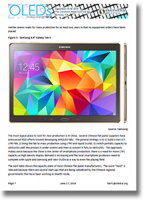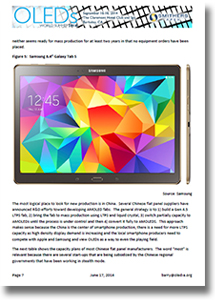A Preview of the Upcoming OLEDs
Many skeptics speculated that OLEDs wouldn’t last, would be too expensive and would be overwhelmed by the LCD juggernaut, much has changed in 14 years.
The OLED Summit started in 2000, when OLEDs displays were just an idea and technology was limited to passive matrix displays.
AMOLEDs started shipping in volume in late 2007 as Samsung delivered displays for mobile phones.
Six months earlier Apple introduced the iPhone and therein began the Age of OLEDs.
Since Samsung is Apple’s largest smartphone competitor, Apple was motivated to use technology other than OLEDs, where Samsung was the only high volume supplier.
But Apple took advantage of the limits of the new display technology and introduced high pixel density and low power LTPS LCDs, which put much pressure on Samsung, since the company was unable to meet the Retina specifications.
While this constraint was unexpected, Samsung reacted with its traditional approach and challenged its engineers resulting in the Super AMOLED display for the Galaxy 5, that now leads the industry not only in traditional OLED benefits of high contrast, fast response time, excellent viewing angle, near perfect color rendition, thin form factor and the widest viewing angle.
But Samsung didn’t stop there; the new display had the highest dynamic range resulting in the best high ambient light viewing. Mobile displays are often used under relatively bright ambient light, which washes out image colors and contrast, reducing picture quality and making it harder to view or read the screen.
To be usable in high ambient light a display needs a dual combination of high screen brightness and low screen reflectance – the Galaxy S5 has both.
For Screen Reflectance, the Galaxy S5 (with 4.5%) is effectively tied for first place with the Galaxy S4 display for the lowest Screen Reflectance of any mobile display.
The display has a variable brightness feature maxing out at an industry leading 698 cd/m2. The Galaxy S5’s resolution of 1920x1080 in a 5.3” display produces 432 ppi, at least 25% higher than the LCD display in the iPhone 5S.
Another important advantage of OLEDs is their excellent screen uniformity compared to LCDs, which often show hot spots and shadows from the edge lit LED.
While LCDs remain more power efficient for images with mostly white content (e.g. text screens), OLEDs are more power efficient for most other content. OLEDs are 27% more power efficient than full HD LCD displays for mixed image content according to DisplayMate
What’s Related


Favorites





